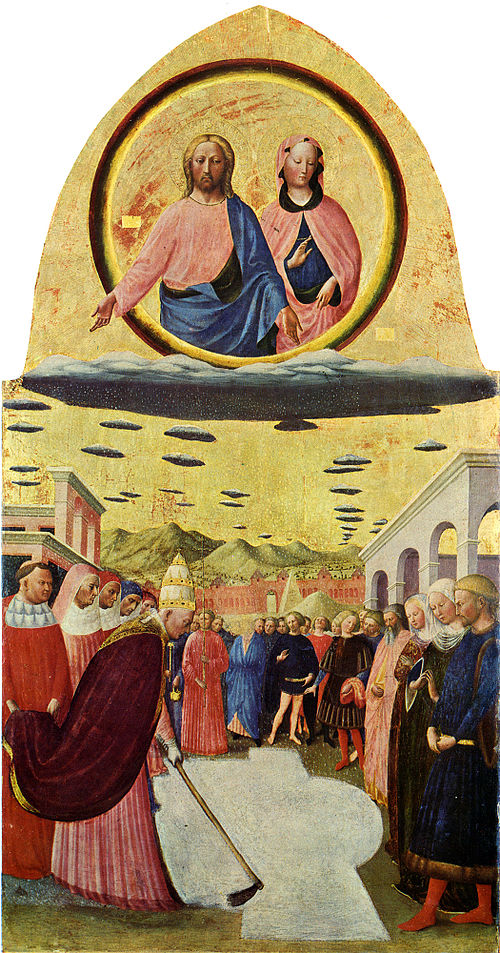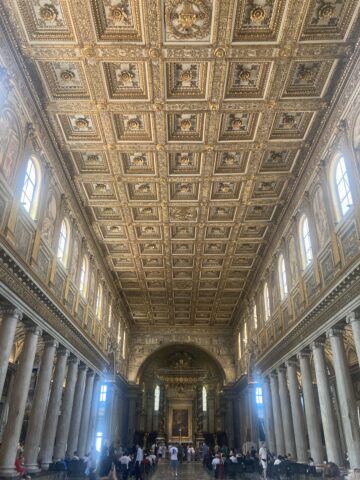
On August 5th, we celebrate the dedication of the Basilica of Santa Maria Maggiore, the highest church in the hierarchy of churches dedicated to Our Lady in all of Christendom. The glorious edifice sits atop the Esquiline Hill, beside the palace of Victor Emmanuel II, just outside the Vatican City State, itself established on February 11th, 1929, providentially the feast of Our Lady of Lourdes, under Benito Mussolini. Even so, the church and its land are owned by the Church, and under her authority.

This memorial is also called Dedicatio Sanctae Mariae ad Nives ‘the Dedication of Our Lady of the Snows’, since legend goes as follows, from the Catholic Encyclopedia:
During the pontificate of Liberius, the Roman patrician John and his wife, who were without heirs, made a vow to donate their possessions to the Virgin Mary. They prayed that she might make known to them how they were to dispose of their property in her honour. On 5 August, at the height of the Roman summer, snow fell during the night on the summit of the Esquiline Hill. In obedience to a vision of the Virgin Mary that they had the same night, the couple built a basilica in honour of Mary on the very spot that was covered with snow.
Like most legends, there may be some truth to this, even if the first reference to the purported miracle was only centuries post hoc. If anyone knows anything about August in Rome, it is brutally hot, and a snowfall would be like hell freezing over (even if Dante does make his inferno cold as ice). Then again, years ago, at WYD 2008, I was wandering through Sydney, Australia, and discovered, on an elevated spot in the middle of the city, a plaque commemorating the one and only snowfall in the city’s history. So far, no church has been built on the spot, but one never knows what the future holds.
Whatever the historical veracity, what is true is that the basilica was completed under Pope Sixtus III just after the Council of Ephesus in 431, and consecrated August 5th, 434. This was to commemorate the Council’s declaration of Our Lady as truly Theotokos, the ‘Mother of God’, against the heresy of Nestorius, who denied this truth, calling Mary only Christotokos – mother of the ‘human person’ of Christ. The Church taught clearly and definitively that Christ is one divine Person, existing in two natures, and it is to that divine Person, the Second of the Trinity, that Our Lady gave birth, in the human nature He had assumed. The world, and our own human nature, would never be the same.
The glorious basilica, an architectural and liturgical marvel, still has its original structure, and within, one may immerse oneself in the beauty of the mosaics, architecture and artwork, along with any number of relics, including most of the original ‘manger’ where the Saviour was born.
Santa Maria Maggiore stands as a testament to Our Lady’s holiness and her unique place is salvation. To conclude with stirring words from Saint Cyril of Alexandria, one of the great champions of Mary’s divine motherhood:










